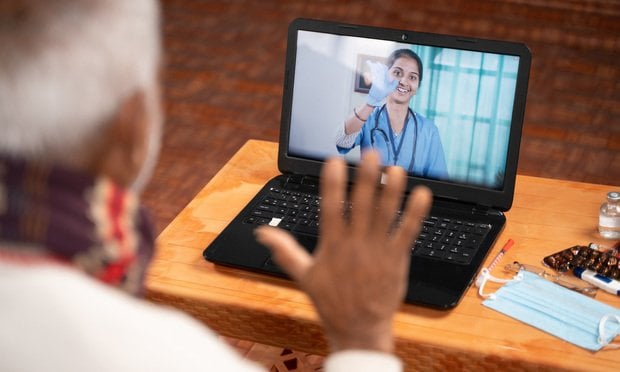Vaccine makers are testing a new boundary: expectantmothers.
|Pregnant women have until recently been off limits, even thoughresearchers long ago saw potential in maternal inoculations thatcould save lives. “It took me awhile to figure out what the problemwas,” says Carol Baker of Baylor College of Medicine, who hasstudied a bacteria called group B streptococcus that can causemeningitis in infants. “The problem was the word ‘pregnancy.”’
|Related: Pregnant women should get flushots
|It’s not any more. Companies including GlaxoSmithKlinePlc, Novavax Inc. and Pfizer Inc. have concluded thatbaby-protecting vaccines for expectant mothers could be bigbusiness.
|They’re working on inoculations against group B strep andrespiratory syncytial virus, which infects newborns’ lungs andbreathing passages. They’re serious enough that boosters couldbecome a routine part of pregnancy.
|Moncef Slaoui, the retiring chairman of Glaxo’s vaccinesdivision, has said the market could ultimately be as big as thepediatric one.
|The industry mindset appeared to change after the 2009 swine flupandemic, when public-health authorities urged widespreadimmunization of pregnant women, and during later whooping-coughoutbreaks, which saw upticks in expectant mothers gettingtetanus-diphteria-pertussis shots.
|Sea change
The efforts paid off, controlling the infections’ spread, saysAnne Schuchat, principal deputy director of the Centers for DiseaseControl and Prevention. “We really had a sea change in the U.S. interms of pregnant women getting the flu vaccine.”
|Related: Fewer Americans say vaccines arevital
|Pharmaceutical companies say a number of factors play into thesurge in development of inoculations for expectant mothers. They’ve“come together recently to make maternal immunization a viablefocus,” says Ripley Ballou, head of Glaxo’s Rockville R&DCenter. “The primary driver has been new and growing evidence ofunmet medical need.”
|While the U.S. Food and Drug Administration has never approved avaccine specifically for safeguarding babies before birth, theagency is working to overcome perceptions regulators aren’tsupportive of manufacturers working on such inoculations. “We areopen to discussing alternative trial designs and alternativeendpoints,” says Marion Gruber, director of the Office ofVaccines Research and Review.
|1960s’ tragedy
The shots can work because a pregnant woman is able to passantibodies on to the fetus, offering newborns protection beforethey’re eligible to start taking pediatric vaccines.
|Maternal vaccines for respiratory syncytial virus have beendiscussed for decades, says Ruth Karron, director of theCenter for Immunization Research at Johns Hopkins UniversityBloomberg School of Public Health. (The school is named for MichaelBloomberg, owner of Bloomberg LP, of which Bloomberg News is aunit.)
|“The companies had some concerns about the use of maternalvaccines in a litigious society. What do we do if a parent makesclaims around issues in the infants that they think are related tomaternal immunization?”
|Related: Measles outbreaks largely due toanti-vaxxers
|Karron says a tragedy in the 60s called a halt to work onrespiratory syncytial virus. The National Institutes of Healthdeveloped a vaccine for young children that not only failed toprotect them but made them more susceptible to the disease, shesays, and two children died. “For a long time after that happened,there was no work on RSV vaccines. It was just completely setaside.”
|For the group B strep vaccine, there’s a big testing hurdle. Theburden is relatively low in the U.S.; the bacteria can live in thebirth canal and infect a baby as it’s delivered, but women in theU.S. are often screened for it and administered antibiotics ifthey’re at risk. In poor parts of the world, such sub-SaharanAfrica, the infection is much more common.
|Several companies have run trials of shots for expectant mothersin African countries, including Novartis Vaccines, whose assets arenow part of GlaxoSmithKline. The FDA’s Gruber says the agency willaccept data from such studies, though manufacturers will have toshow the results would apply in the U.S.
|That might not be easy. “Look at the infrastructure ofhealthcare in sub-Saharan Africa,” says Laura Riley, vice chair ofobstetrics at Massachusetts General Hospital. “Many of them stilldon’t deliver in a hospital. You can’t just go vaccinating peopleand not know the outcome.”
|It could be years before maternal vaccines hit the market. “TheFDA is extremely cautious,” Glaxo’s Ballou says. “It is a veryslow, methodical process.”
|But data from Novavax’s trial of its RSV vaccine in pregnantwomen could be available as early as 2018. “People were looking atus with interest in the topic six years ago,” says GregoryGlenn, president of R&D at the company. “Today there’s a hugeamount of affirmation, support and optimism.”
|Copyright 2018 Bloomberg. All rightsreserved. This material may not be published, broadcast, rewritten,or redistributed.
Complete your profile to continue reading and get FREE access to BenefitsPRO, part of your ALM digital membership.
Your access to unlimited BenefitsPRO content isn’t changing.
Once you are an ALM digital member, you’ll receive:
- Critical BenefitsPRO information including cutting edge post-reform success strategies, access to educational webcasts and videos, resources from industry leaders, and informative Newsletters.
- Exclusive discounts on ALM, BenefitsPRO magazine and BenefitsPRO.com events
- Access to other award-winning ALM websites including ThinkAdvisor.com and Law.com
Already have an account? Sign In
© 2024 ALM Global, LLC, All Rights Reserved. Request academic re-use from www.copyright.com. All other uses, submit a request to [email protected]. For more information visit Asset & Logo Licensing.








